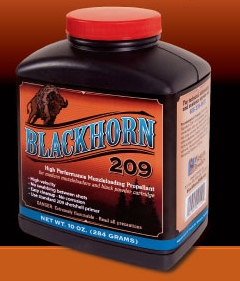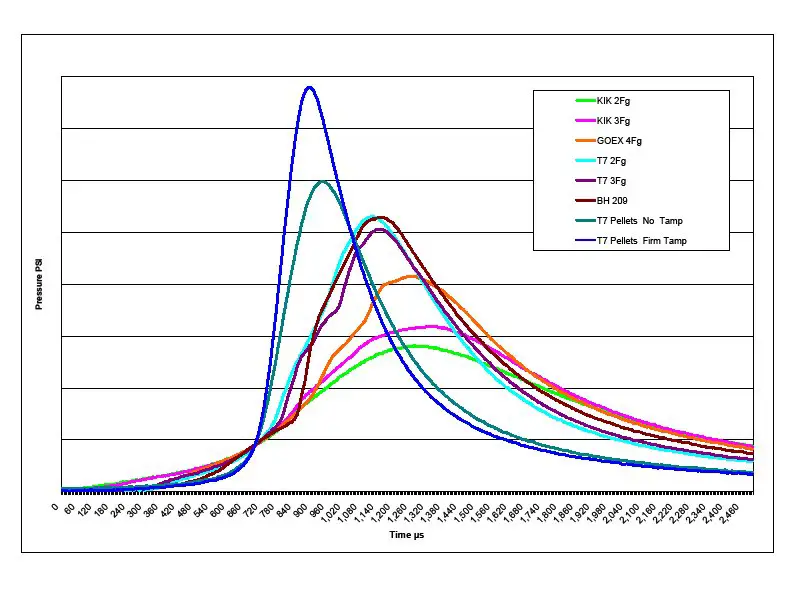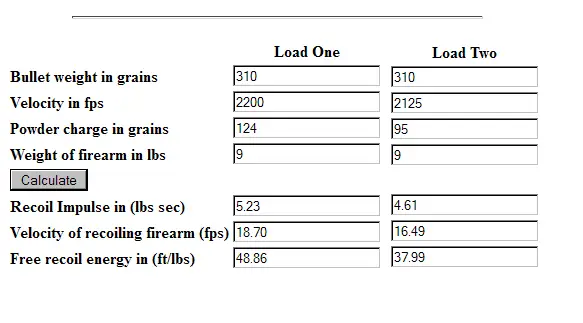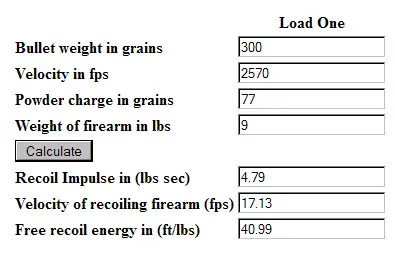


Blackhorn 209 Advantages vs. T7 pellets
Does
not absorb as much moisture
Longer shelf life
Lower cost per shot
No crud ring
Lower pressures
Does not require swabbing between shots, just load and shoot
Instant cleanup with two patches of Hoppe's No. 9
Less corrosive
No problem with pellet cracking / crushing


The pressure difference is substantial (above) and that means unwanted
sabot stress and damage.
Based on current Gander Mountain pricing, it costs you $.33 per “50 grain” pellet, or $1.32 per shot in propellant cost alone in the case of a “4 pellet approved” front stuffer.
T7 Magnum “60 grain” pellets cost about $.50 each, or $1.50 per shot for a “three magnum pellet load.”
A T7 “50 grain pellet” actually weighs 31 grains, about 37.5 grains actual weight for the “60 grain” T7 Magnum pellets.
A 95 grain charge weight of Blackhorn 209 runs $1 per shot, also G. M. pricing.

Above: Recoil in a 9 pound rifle, 300 grain saboted projectile. "Load One" a 4 pellet load, "Load Two" 95 grains by weight Blackhorn 209. Below is a representative .375 H & H load, also assuming a 9 pound rifle.

You might want to compare the recoil to various cartridges at http://www.randywakeman.com/RifleRecoilTable.htm . Surprised? As to why anyone would pay 50% more to use a water-sucking, low shelf-life, crud-ring forming, more corrosive propellant, that is rough on sabots and shoulders alike, with 45% or so more recoil, that is comparatively fragile and prone to fracturing upon loading, that must be swabbed after each and every shot escapes me. That's why they call them choices, though.
Copyright 2014 by Randy Wakeman. All Rights Reserved.



